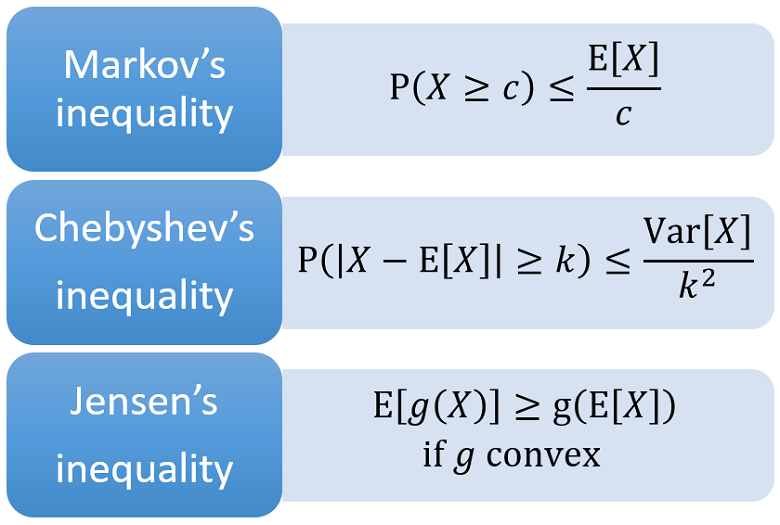Markov's inequality is a probabilistic inequality. It provides an upper bound to the probability that the realization of a random variable exceeds a given threshold.
The proposition below formally states the inequality.
Proposition
Let
be an integrable random
variable defined on a sample
space
.
Let
for all
(i.e.,
is a positive random variable). Let
(i.e.,
is a strictly positive real number). Then, the following inequality, called
Markov's inequality,
holds:
Reading and understanding the proof of Markov's inequality is highly recommended because it is an interesting application of many elementary properties of the expected value.
First note
thatwhere
is the indicator of the event
and
is the indicator of the event
.
As a consequence, we can
write
![[eq9]](/images/Markov-inequality__14.png) Now,
note that
Now,
note that
is a positive random variable and that the
expected value of a positive random
variable is
positive:
Therefore,
![]() Now,
note that the random variable
Now,
note that the random variable
is smaller than the random variable
for any
:
because,
trivially,
is always smaller than
when the indicator
is not zero. Thus, by an elementary property of the
expected value, we have
that
![]() Furthermore,
by using the linearity of the expected
value and the fact that the expected value
of an indicator is equal to the probability of the event it indicates, we
obtain
Furthermore,
by using the linearity of the expected
value and the fact that the expected value
of an indicator is equal to the probability of the event it indicates, we
obtain![]() The
above inequalities can be put
together:
The
above inequalities can be put
together:![[eq19]](/images/Markov-inequality__27.png) Finally,
since
Finally,
since
is strictly positive we can divide both sides of the right-hand inequality to
obtain Markov's
inequality:
This property also holds when
almost surely (in other words, there
exists a zero-probability event
such that
).
Suppose that an individual is extracted at random from a population of individuals having an average yearly income of $40,000.
What is the probability that the extracted individual's income is greater than $200,000?
In the absence of more information about the distribution of income, we can
use Markov's inequality to calculate an upper bound to this
probability:![[eq22]](/images/Markov-inequality__33.png) Therefore,
the probability of extracting an individual having an income greater than
$200,000 is less than
Therefore,
the probability of extracting an individual having an income greater than
$200,000 is less than
.
Markov's inequality has several applications in probability and statistics.
For example, it is used:
to prove Chebyshev's inequality;
in the proof that mean square convergence implies convergence in probability;
to derive upper bounds on tail probabilities (Exercise 2 below).
Below you can find some exercises with explained solutions.
Let
be a positive random variable whose expected value
is
Find a lower bound to the
probability
First of all, we need to use the formula
for the probability of a
complement:Now,
we can use Markov's
inequality:
![[eq26]](/images/Markov-inequality__39.png) Multiplying
both sides of the inequality by
Multiplying
both sides of the inequality by
,
we
obtain
Adding
to both sides of the inequality, we obtain
![]() Thus,
the lower bound
is
Thus,
the lower bound
is
Let
be a random variable such that the expected value
exists
and is finite.
Use the latter expected value to derive an upper bound to the tail
probabilitywhere
is a positive constant.
By Markov's inequality, we
have
If you like this page, StatLect has other pages on probabilistic inequalities:

Please cite as:
Taboga, Marco (2021). "Markov's inequality", Lectures on probability theory and mathematical statistics. Kindle Direct Publishing. Online appendix. https://www.statlect.com/fundamentals-of-probability/Markov-inequality.
Most of the learning materials found on this website are now available in a traditional textbook format.